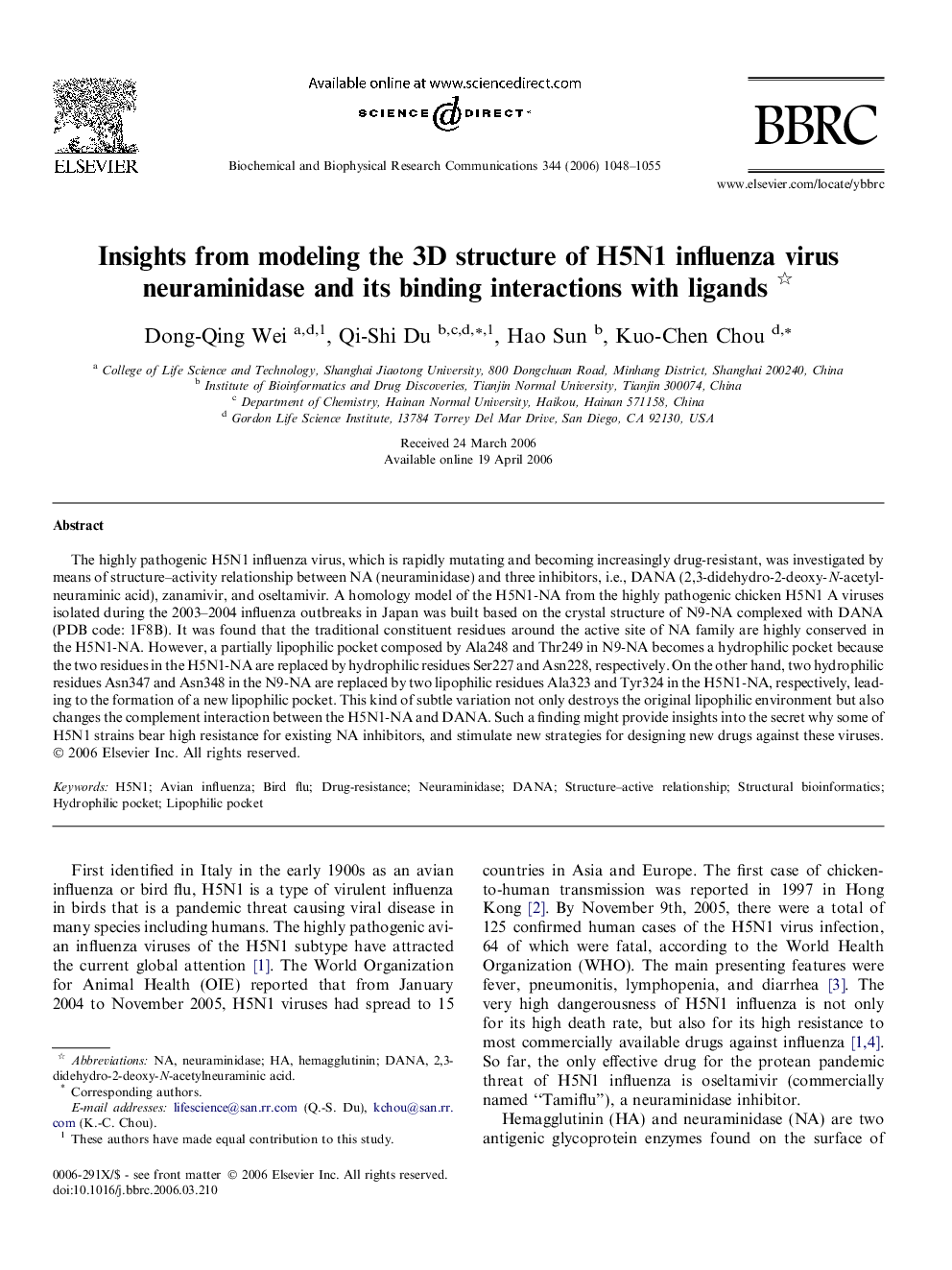| Article ID | Journal | Published Year | Pages | File Type |
|---|---|---|---|---|
| 1941101 | Biochemical and Biophysical Research Communications | 2006 | 8 Pages |
The highly pathogenic H5N1 influenza virus, which is rapidly mutating and becoming increasingly drug-resistant, was investigated by means of structure–activity relationship between NA (neuraminidase) and three inhibitors, i.e., DANA (2,3-didehydro-2-deoxy-N-acetylneuraminic acid), zanamivir, and oseltamivir. A homology model of the H5N1-NA from the highly pathogenic chicken H5N1 A viruses isolated during the 2003–2004 influenza outbreaks in Japan was built based on the crystal structure of N9-NA complexed with DANA (PDB code: 1F8B). It was found that the traditional constituent residues around the active site of NA family are highly conserved in the H5N1-NA. However, a partially lipophilic pocket composed by Ala248 and Thr249 in N9-NA becomes a hydrophilic pocket because the two residues in the H5N1-NA are replaced by hydrophilic residues Ser227 and Asn228, respectively. On the other hand, two hydrophilic residues Asn347 and Asn348 in the N9-NA are replaced by two lipophilic residues Ala323 and Tyr324 in the H5N1-NA, respectively, leading to the formation of a new lipophilic pocket. This kind of subtle variation not only destroys the original lipophilic environment but also changes the complement interaction between the H5N1-NA and DANA. Such a finding might provide insights into the secret why some of H5N1 strains bear high resistance for existing NA inhibitors, and stimulate new strategies for designing new drugs against these viruses.
